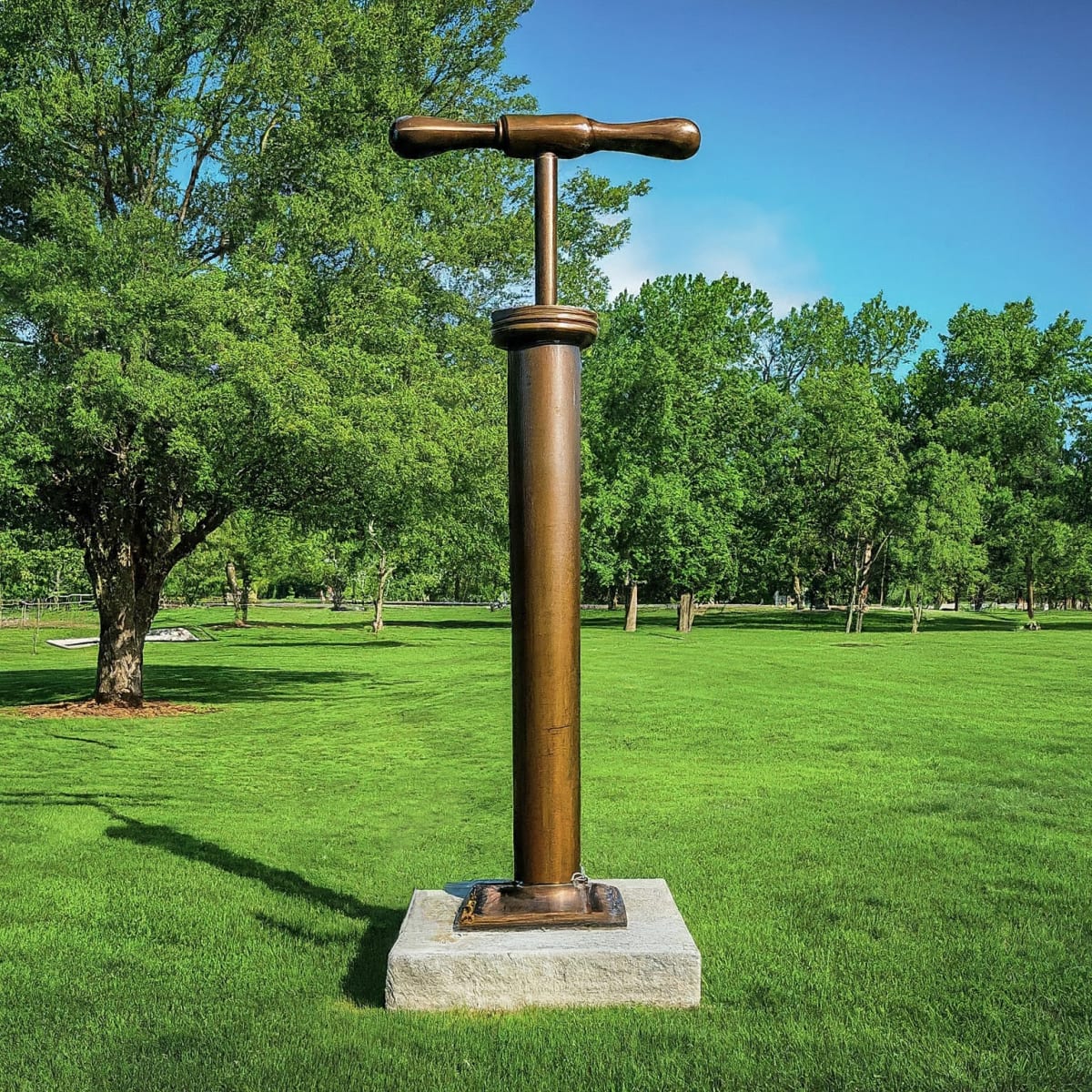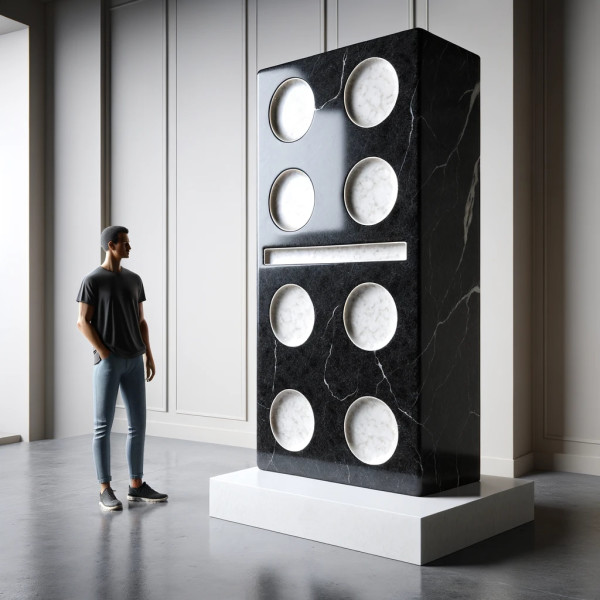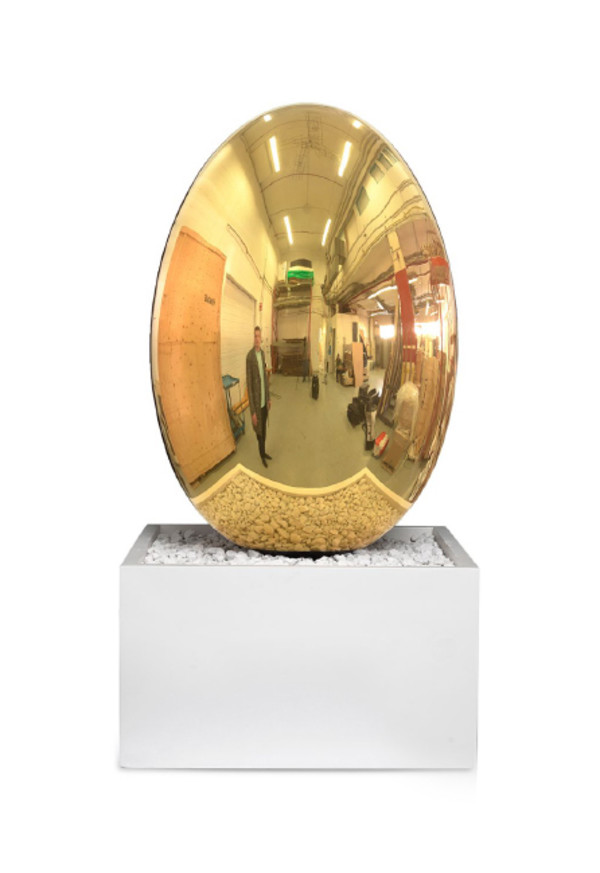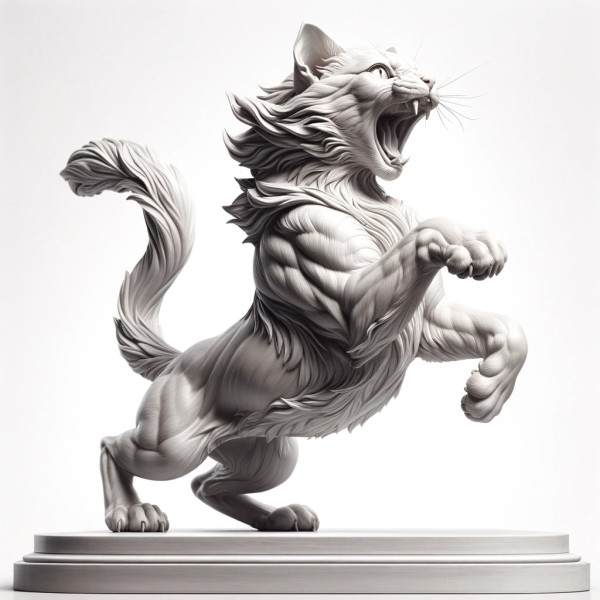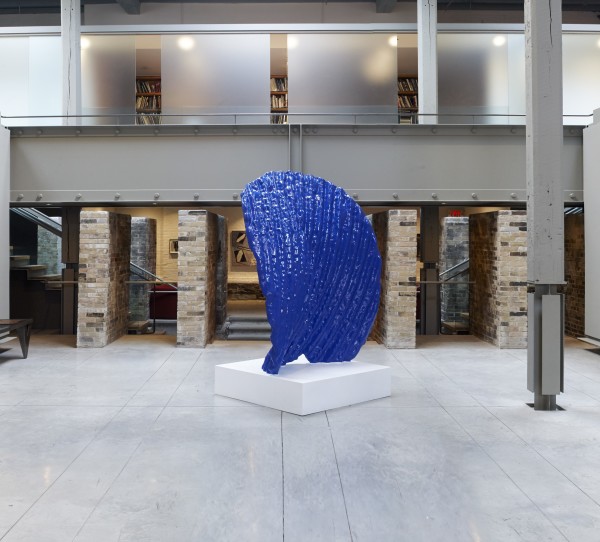- Brendon McNaughton
- Inflate, 2024
- Cast bronze.
- 120 x 48 x 48 in (304.8 x 121.92 x 121.92 cm)
- Inv: I.2024.AP
Inflate monumentalizes an ordinary air pump, cast in bronze at ten feet tall, as an allegory for the cycles of inflation that recur throughout history. The work emerged from the artist’s study of Ray Dalio’s debt cycles, the historic role of gold, and the lived reality of rising costs in groceries, fuel, housing, and daily life amid deficit spending.
From Rome’s debased denarius to the French assignats, from Weimar Germany—where wages were carried home in wheelbarrows—to Zimbabwe, where $100 trillion notes could barely pay for a loaf of bread, currencies have been inflated into collapse. McNaughton recalls purchasing one of these notes for only a few U.S. dollars in his twenties: a trillionaire on paper, yet unable to buy even an apple.
The pump, absurdly oversized yet fixed in bronze, becomes a monument to this recurring cycle. Inflate asks: are the lessons of history unseen or ignored? Is there space for intervention—or must we acknowledge inflation as an inescapable condition of human economies?
Catalogue Description
Inflate (2024) enlarges an ordinary air pump into a ten-foot bronze sculpture, transforming a modest tool of pressure into a monument to the cycles of inflation that recur across history. The concept emerged from McNaughton’s study of Ray Dalio’s theory of the Big Debt Cycle, his exploration of gold’s enduring role as a store of value, and his observation of contemporary conditions—trillions in deficit spending, government intervention in financial markets, and the visible rise in the cost of living.
The pump serves as an apt metaphor. Its function is to maintain form through artificial pressure, injecting air into systems that would otherwise collapse. Cast in bronze, a material of permanence and commemoration, it becomes paradoxical: a device designed for air rendered immovable. The act of inflation is here frozen into monument—at once necessary, fragile, and unsustainable.
History provides a litany of examples. The Roman Empire progressively debased its denarius until its silver content disappeared. Revolutionary France issued assignats in such volume that they quickly lost all value. In Weimar Germany, wages were carried home in wheelbarrows, the notes worth less than the paper upon which they were printed. Zimbabwe offers a more recent case: $100 trillion notes were circulated that could barely pay for a loaf of bread or cover a bus fare. McNaughton himself purchased one of these notes for only a few U.S. dollars in his twenties—momentarily a trillionaire on paper, yet unable to buy even an apple. The experience became one of his earliest real-world lessons in inflation and the erosion of purchasing power. Argentina and Venezuela, likewise, have endured repeated episodes of currency destruction through uncontrolled inflation. Each follows the same logic: credit expands, debt accumulates, money is created to sustain confidence, and value dissolves.
Contemporary societies continue along this trajectory. The 2008 subprime mortgage crisis saw governments intervene with sweeping bank bailouts and liquidity programs. During the pandemic, trillions in deficit-financed stimulus were injected into global markets to stave off collapse. These actions may have stabilized markets in the short term, but they echo the familiar rhythm of expansion, devaluation, and eventual contraction. As Ray Dalio observes, history does not repeat, but it rhymes.
By monumentalizing the pump, McNaughton renders visible what is typically unseen: the constant act of propping up entire economies by inflating them with manufactured value. Enlarged to a scale beyond human use and fixed in bronze, Inflate transforms a banal object into a solemn emblem of an enduring pattern.
The work ultimately poses questions that extend across time: Are the lessons of history unseen, or simply ignored? Is there space for intervention—or must we acknowledge inflation as an inescapable condition of human economies?
Other Work From Brendon McNaughton
All works protected under copyright. © Brendon McNaughton – The Asset Artist
